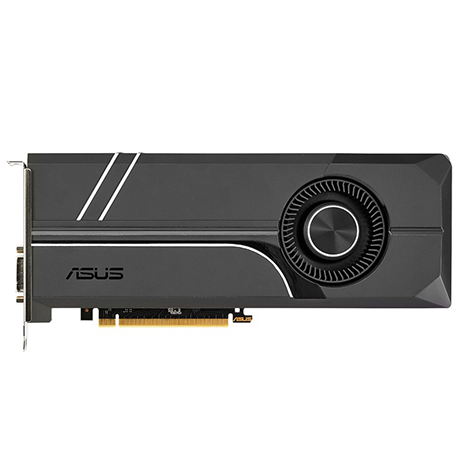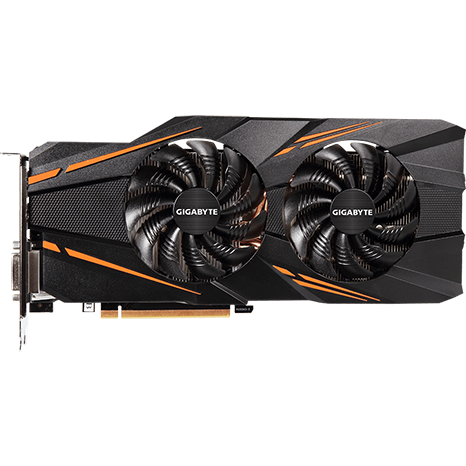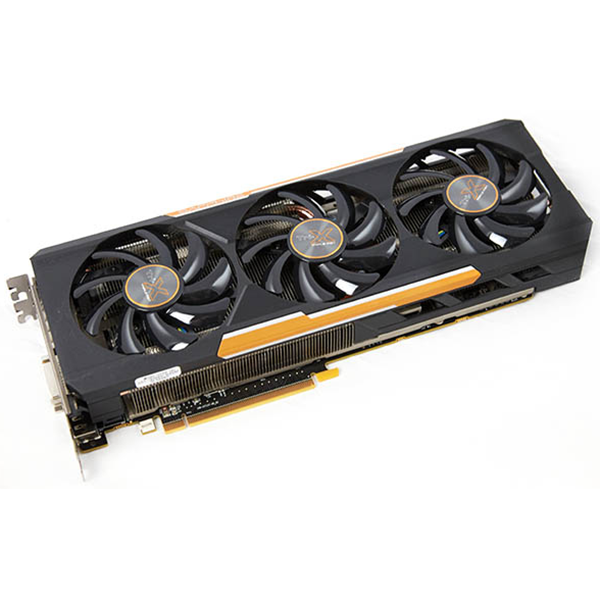AMD Radeon Vega RX 64 8GB Review
Why you can trust Tom's Hardware
How We Tested AMD's Vega RX 64 8GB
AMD’s latest and greatest will no doubt be found in high-end platforms. Some of these may include Broadwell-E-based systems. However, our U.S. lab is sticking with its MSI Z270 Gaming Pro Carbon motherboard, which was recently upgraded to host a Core i7-7700K CPU, for performance measurements. The new processor is complemented by G.Skill’s F4-3200C14Q-32GTZ memory kit. Intel’s Kaby Lake architecture remains one of the company’s most effective per clock cycle, and a stock 4.2 GHz frequency is higher than the models with more cores. Crucial’s MX200 SSD remains, as does the Corsair H110i cooler and be quiet! Dark Power Pro 10 850W power supply.
As far as competition goes, the Radeon RX Vega 64 is rivaled most closely by Nvidia's GeForce GTX 1080. Of course, we imagine that hardcore gamers also want to know how Vega 64 fares against the faster/pricier GeForce GTX 1080 Ti and Titan Xp, so we include them in our benchmark results. Similarly, we add GeForce GTX 1070 for a comparison point underneath. Progress relative to AMD's previous-gen graphics hardware is tracked by testing the Radeon R9 Fury X and Radeon R9 390X.
Leading up to today's review, we completely revamped the software side of our platform. Installing the Windows 10 Creators Update caused all sorts of problems with PresentMon, OCAT, and our own custom front-end, but we thought it important to get our operating systems current. As such, we used a combination of OCAT 1.1.0 and PMG 0.9.21 to collect data, along with a fresh build of our log file interpreter to get that information into Excel. All of the Nvidia cards were benchmarked using driver version 384.94, while AMD's previous-gen cards were tested with Crimson ReLive Edition 17.7.2.
It's also worth noting that the air-cooled Radeon RX Vega 64 has two on-board BIOS versions, each with three different power/performance profiles. All of our benchmarks are run in the out-of-box configuration using AMD's more aggressive BIOS and a Balanced profile.
Our conventional gaming selection now includes Ashes of the Singularity: Escalation, Battlefield 1, Doom, Hitman, Metro: Last Light Redux, Rise of the Tomb Raider, Tom Clancy’s The Division, Tom Clancy’s Ghost Recon Wildlands, and The Witcher 3. We’re also adding Warhammer 40,000: Dawn of War III.
The test methodology we use for the other games in our suite comes from PresentMon: Performance In DirectX, OpenGL, And Vulkan. In short, all of these games are evaluated using a combination of OCAT and our own in-house GUI for PresentMon, with logging via AIDA64. If you want to know more about our charts (particularly the unevenness index), we recommend reading that story.
Comparison Graphics Cards
Test Systems
We introduced our new test system and methodology in How We Test Graphics Cards. If you'd like more detail about our general approach, check that piece out.
Get Tom's Hardware's best news and in-depth reviews, straight to your inbox.
In this case, only the hardware configuration with CPU, RAM, mainboard, as well as the new cooling system are different, so the summary in table form gives a quick overview of the systems used:
| Test System and Configuration | |
|---|---|
| Hardware | Germany Intel Core i7-6900K @ 4.3 GHzMSI X99S XPower Gaming TitaniumCorsair Vengeance DDR3-32001x 1TB Toshiba OCZ RD400 (M.2, System)2x 960GB Toshiba OCZ TR150 (Storage, Images)be quiet! Dark Power Pro 11, 850W Power SupplyWindows 10 Pro (Creators Update)U.S.Intel Core i7-7700KMSI Z270 Gaming Pro CarbonG.Skill F4-3200C14Q-32GTZ1x 500GB Crucial MX200be quiet! Dark Power Pro 11, 850W Power SupplyWindows 10 Pro (Creators Update) |
| Cooling | GermanyAlphacool Eiszeit 2000 ChillerAlphacool Eisblock XPXThermal Grizzly Kryonaut (For Cooler Switch) |
| Monitor | Eizo EV3237-BK |
| PC Case | Lian Li PC-T70 with Extension Kit and Mods Configurations: Open Benchtable, Closed Case |
| Power Consumption Measurement | Contact-free DC Measurement at PCIe Slot (Using a Riser Card) Contact-free DC Measurement at External Auxiliary Power Supply Cable Direct Voltage Measurement at Power Supply 2x Rohde & Schwarz HMO 3054, 500MHz Digital Multi-Channel Oscilloscope with Storage Function4x Rohde & Schwarz HZO50 Current Probe (1mA - 30A, 100kHz, DC) 4x Rohde & Schwarz HZ355 (10:1 Probes, 500MHz) 1x Rohde & Schwarz HMC 8012 Digital Multimeter with Storage Function |
| Thermal Measurement | 1x Optris PI640 80Hz Infrared Camera + PI Connect Real-Time Infrared Monitoring and Recording |
| Acoustic Measurement | NTI Audio M2211 (with Calibration File, Low Cut at 50Hz) Steinberg UR12 (with Phantom Power for Microphones)Creative X7, Smaart v.7 Custom-Made Proprietary Measurement Chamber, 3.5 x 1.8 x 2.2m (L x D x H) Perpendicular to Center of Noise Source(s), Measurement Distance of 50cm Noise Level in dB(A) (Slow), Real-time Frequency Analyzer (RTA) Graphical Frequency Spectrum of Noise |
MORE: Best Graphics Cards
MORE: Desktop GPU Performance Hierarchy Table
MORE: All Graphics Content
Current page: How We Tested AMD's Vega RX 64 8GB
Prev Page Board Layout & Components Next Page Ashes of the Singularity: Escalation (DirectX 12)-
10tacle We waited a year for this? Disappointing. Reminds me of the Fury X release which was supposed to be the 980Ti killer at the same price point ($649USD if memory serves me correctly). Then you factor in the overclocking ability of the GTX 1080 (Guru3D only averaged a 5% performance improvement overclocking their Vega RX 64 sample to 1700MHz base/boost clock and a 1060MHz memory clock). This almost seems like an afterthought. Hopefully driver updates will improve performance over time. Thankfully AMD can hold their head high with Ryzen.Reply -
Sakkura For today's market I guess the Vega 64 is acceptable, sort of, since the performance and price compare decently with the GTX 1080. It's just a shame about the extreme power consumption and the fact that AMD still has no answer to the 1080 Ti.Reply
But I would be much more interested in a Vega 56 review. That card looks like a way better option, especially with the lower power consumption. -
envy14tpe Disappointing? what. I'm impressed. Sits near a 1080. Keep that in mind when thinking that FreeSync sells for around $200 less than Gsync. So pair that with this GPU and you have awesome 1440p gaming.Reply -
SaltyVincent This was an excellent review. The Conclusion section really nailed down everything this card has to offer, and where it sits in the market.Reply -
10tacle Reply20060001 said:Disappointing? what. I'm impressed. Sits near a 1080.
The GTX 1080 has been out for 15 months now, that's why. If AMD had this GPU at $50 less then it would be an uncontested better value (something AMD has a historic record on both in GPUs and CPUs). At the same price point however to a comparable year and three month old GPU, there's nothing to brag about - especially when looking at power use comparisons. But I will agree that if you include the cost of a G-Sync monitor vs. a FreeSync monitor, at face value the RX 64 is the better value than the GTX 1080. -
redgarl It`s not a bad GPU, however I would not buy one. I am having an EVGA 1080 FTW that I am living to hate (2 RMAs in 10 months), however even if I wanted to switch to Vega, might not be a good idea. It will not change anything.Reply
However two Vega 56 in CF might be extremely interesting. i did that with two 290x 2 years ago and it might be still the best combo out there. -
blppt IIRC, both AMD and Nvidia are moving away from CF/SLI support, so you'd have to count on game devs supporting DX12 mgpu (not holding my breath on that one for the near future).Reply -
cknobman I game at 4k now (just bought 1080ti last week) and it appears for the time being the 1080ti is the way to go.Reply
I do see promise in the potential of this new AMD architecture moving forward.
As DX12 becomes the norm and more devs take advantage of async then we will see more performance improvements with the new AMD architecture.
If AMD can get power consumption under control then I may move back in a year or two.
Its a shame too because I just built a Ryzen 7 rig and felt a little sad combining it with an Nvidia gfx card. -
AgentLozen I'm glad that AMD has a video card for enthusiasts who run 144hz monitors @ 1440p. The RX 580 and Fury X weren't well suited for that. I'm also happy to see that Vega64 can go toe to toe with the GTX 1080. Vega64 and a Freesync monitor are a great value proposition.Reply
That's where the positives end. I'm upset with the lack of progress since Fury X like everyone else. There was a point where Fury X was evenly matched with nVidia's best cards during the Maxwell generation. Nvidia then released their Pascal generation and a whole year went by before a proper response from AMD came around. If Vega64 launched in 2016, this would be totally different story.
Fury X championed High Bandwidth Memory. It showed that equipping a video card with HBM could raise performance, cut power consumption, and cut physical card size. How did HBM2 manifest? Higher memory density? Is that all?
Vega64's performance improvement isn't fantastic, it gulps down gratuitous amounts of power, and it's huge compared to Fury X. It benefits from a new generation of High Bandwidth memory (HBM2) and a 14nm die shrink. How much more performance does it receive? 23% in 1440p. Those are Intel numbers!
Today's article is a celebration of how good Fury X really was. It still holds up well today with only 4GB of video memory. It even beat the GTX 1070 is several benchmarks. Why didn't AMD take the Fury X, shrink it to 14nm, apply architecture improvements from Polaris 10, and release it in 2016? That thing would be way better than Vega64.
edit: Reworded some things slightly. Added a silly quip. 23% comes from averaging the differences between Fury X and Vega64. -
zippyzion Well, that was interesting. Despite its flaws I think a Vega/Ryzen build is in my future. I haven't been inclined to give NVidia any of my money for a few years now, since a malfunction with an FX 5900 destroyed my gaming rig... long story. I've been buying ATI/AMD cards since then and haven't felt let down by any of them.Reply
Let us not forget how AMD approaches graphics cards and drivers. This is base performance and baring any driver hiccups it will only get better. On top of that this testing covers the air cooled version. We should see better performance on the water cooled version that would land it between the 1080 and the Ti.
Also, I'd really like to see what low end and midrange Vega GPUs can do. I'm interested to see what the differences are with the 56, as well as the upcoming Raven Ridge APU. If they can deliver RX 560 (or even just 550) performance on an APU, AMD will have a big time winner there.




